High-Quality Wool Quilt Batting
Discover premium wool quilt batting, ideal for quilting projects with options like organic, black wool, and cotton-wool blends. Explore our factory’s customization abilities for various sizes, patterns, and materials.
Introduction to Quilt Batting
Overview of Quilt Batting:
Quilt batting is a soft, fibrous layer sandwiched between the top and bottom fabrics of a quilt, giving it warmth, weight, and texture. The choice of batting can influence the quilt’s overall loft, softness, and feel. Different types cater to various needs, from lightweight summer quilts to thick, cozy winter blankets.
Types of Batting
Wool Quilt Batting
Wool quilt batting is naturally insulating, resilient, and breathable. Ideal for colder climates, it maintains warmth while wicking away moisture, making it comfortable for all-season use. Wool’s natural loft makes it a top choice for quilts where softness and structure are desired.
Cotton-Wool Blend Quilt Batting
A combination of cotton and wool batting offers the best of both materials: the breathability and softness of cotton with the warmth and loft of wool. This blend is suitable for year-round quilts and offers added resilience and comfort for frequently used bedding.
Synthetic Quilt Batting
Synthetic batting, often made from polyester, is lightweight, affordable, and highly resistant to shrinkage and wrinkling. It’s a practical option for projects that need frequent washing, such as baby quilts or utility quilts. Polyester batting offers a lower loft and is generally easy to maintain.
Cotton Wool Batting
Cotton quilt batting provides a flat, smooth finish, giving quilts a more traditional look and feel. Known for breathability and softness, it’s ideal for lightweight quilts, summer blankets, and projects where a thinner profile is preferred. Cotton batting is often used in machine quilting due to its durability and ease of handling.
Black Wool Quilt Batting
Black wool quilt batting is a unique option for quilts with dark or bold color schemes. This batting is not only functional but also adds depth and dimension, making it popular among quilters looking for a distinctive aesthetic in their projects.
What is Wool Quilt Batting?
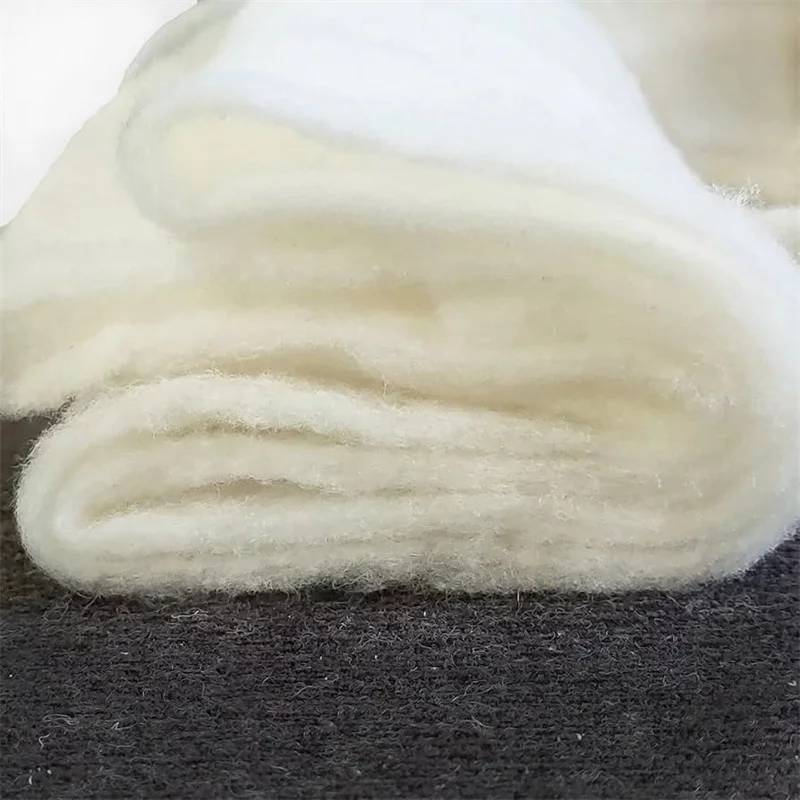
Wool quilt batting is a natural fiber batting that provides exceptional warmth and comfort. It’s often used in high-quality quilts due to its ability to insulate while allowing airflow, ensuring the user stays cozy without overheating. Wool fibers trap heat and wick away moisture, making this batting perfect for cold climates.
- Benefits and Key Features:
- Insulation: Wool batting keeps quilts warm by creating an insulating barrier.
- Breathability: Wool’s moisture-wicking properties allow it to remain comfortable in different temperatures.
- Resilience: Wool batting is less prone to clumping or flattening, maintaining its loft and bounce.
- Natural Flame Resistance: Wool fibers are naturally resistant to flames, enhancing safety for home use.
- Eco-Friendly Option: Wool is a renewable resource, especially in options like organic wool quilt batting, which avoids chemicals in its production.
- Common Uses:
- Wool batting is popular in heirloom quilts, hand-quilted projects, and cozy bedding. It’s also favored for its comfort and natural qualities, suitable for children’s quilts, baby blankets, and quilts for sensitive users.
Comparison: Wool Batting vs. Cotton Batting
- Insulation and Comfort:
- Wool: Naturally insulates and provides a higher loft, making it ideal for winter quilts and blankets.
- Cotton: Cotton is more breathable and flatter, often preferred for warm-weather quilts or lighter bedding.
- Durability and Maintenance:
- Wool: Wool batting is resilient, bounces back after washing, and retains its shape over time, though it requires careful washing.
- Cotton: Cotton batting is easy to care for but can shrink if not pre-washed or dried carefully.
- Use Scenarios:
- Wool batting for quilts: Preferred for family heirlooms, holiday gifts, or premium bedding.
- Cotton batting: Often used in baby blankets, lightweight summer quilts, and thinner quilts that lay flat.
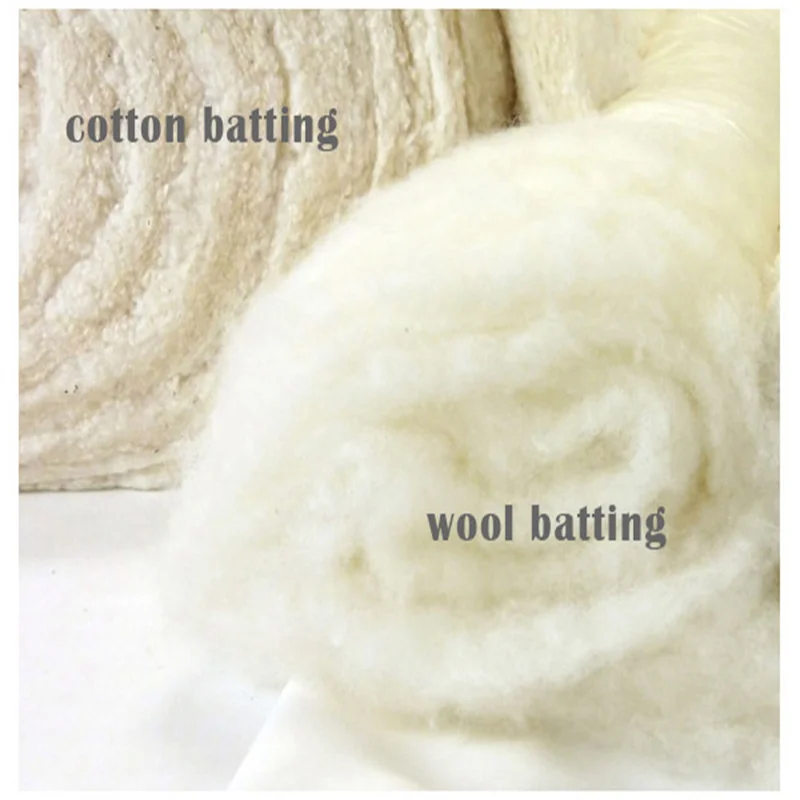
Why Choose Us?
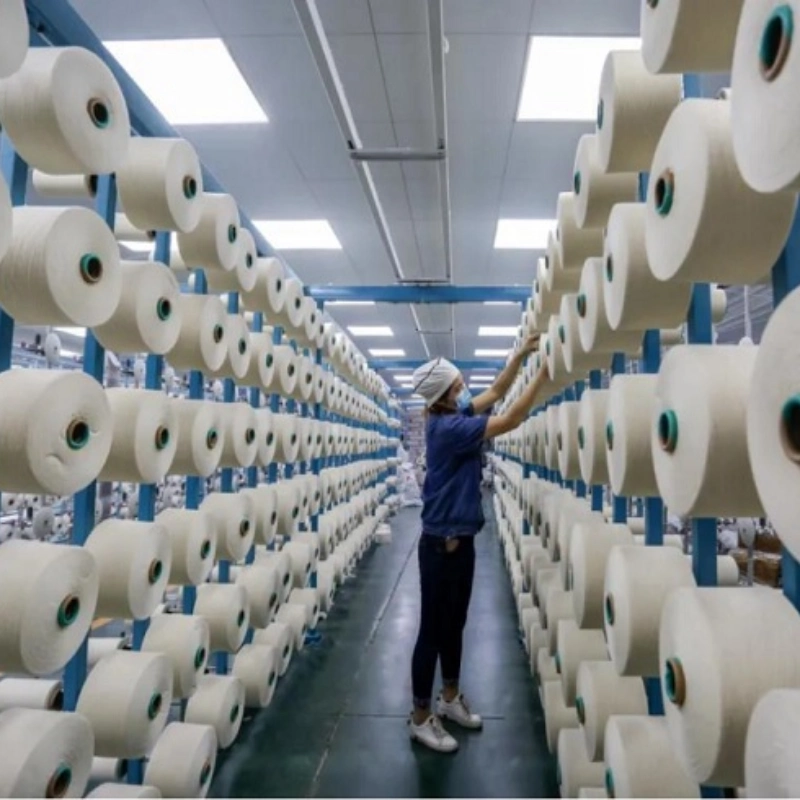
- Factory-Direct Quality and Expertise:
- Our factory specializes in producing high-quality wool quilt batting, with strict quality control at each stage of production, ensuring every batch meets our standards.
- Customization Options:
- Brown Twill Fabric Manufacturing: We offer custom manufacturing of brown twill fabric, perfect for quilt exteriors. This durable and versatile fabric can be produced in various colors, patterns, and textures to suit individual preferences.
- Diverse Color and Pattern Options: With extensive customization capabilities, we provide wool batting in multiple colors, including black wool quilt batting and organic options, allowing customers to personalize their quilt projects.
- Order Sizes and Project Flexibility: Whether you’re an individual quilter or a wholesale buyer, our factory can accommodate orders of any size, including king-size batting, rolls, and custom blend options like cotton wool batting.
Types of Wool Quilt Batting – Detailed Classifications
By Wool Type
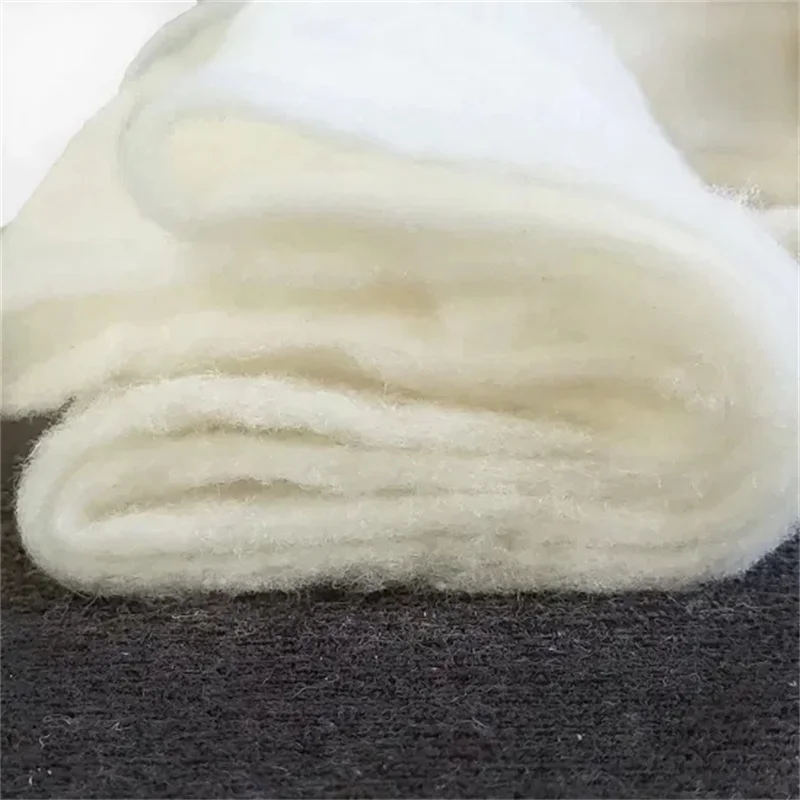
Natural Wool Quilt Batting
- Characteristics: Natural wool batting is prized for its softness, resilience, and high loft. It has natural insulation properties that make it ideal for quilts meant to provide warmth without excessive weight. Its breathability and moisture-wicking abilities keep users comfortable in various climates.
- Use Cases: Natural wool quilt batting is perfect for cozy bed quilts, winter blankets, and heirloom projects where a soft, traditional feel is desired. It’s commonly used in high-quality quilts meant for daily use or for colder climates.
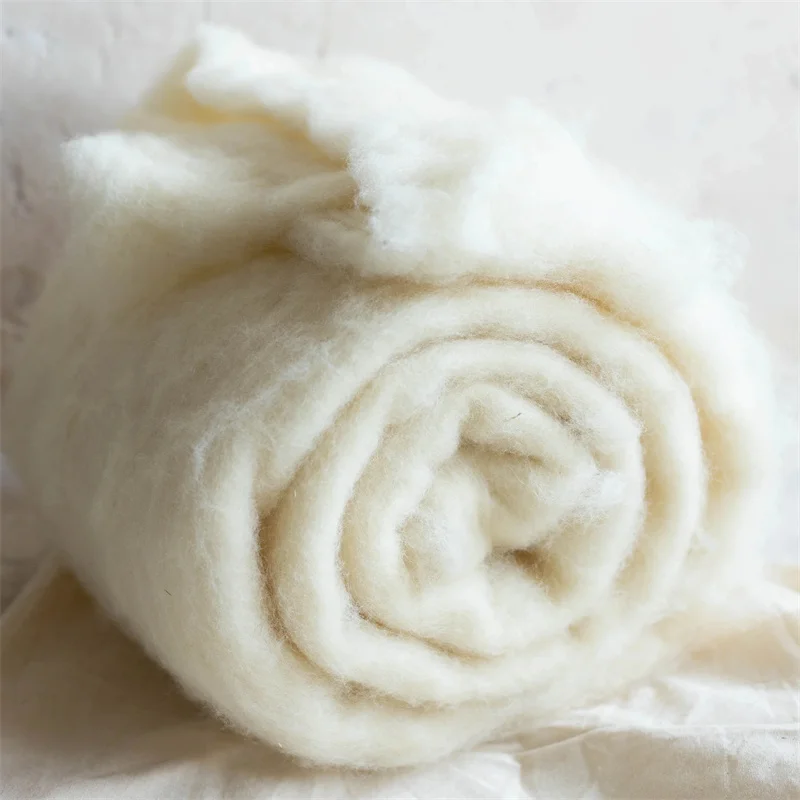
Organic Wool Quilt Batting
- Characteristics: Made from certified organic wool, this batting is free from harmful chemicals and pesticides, making it a hypoallergenic option. Organic wool batting offers similar warmth, loft, and breathability as natural wool but with an eco-friendly focus.
- Use Cases: Organic wool quilt batting is ideal for environmentally-conscious quilters and projects intended for babies, young children, or individuals with sensitive skin. Its natural purity makes it popular in family heirlooms, baby quilts, and gifts meant to last a lifetime.
By Blend
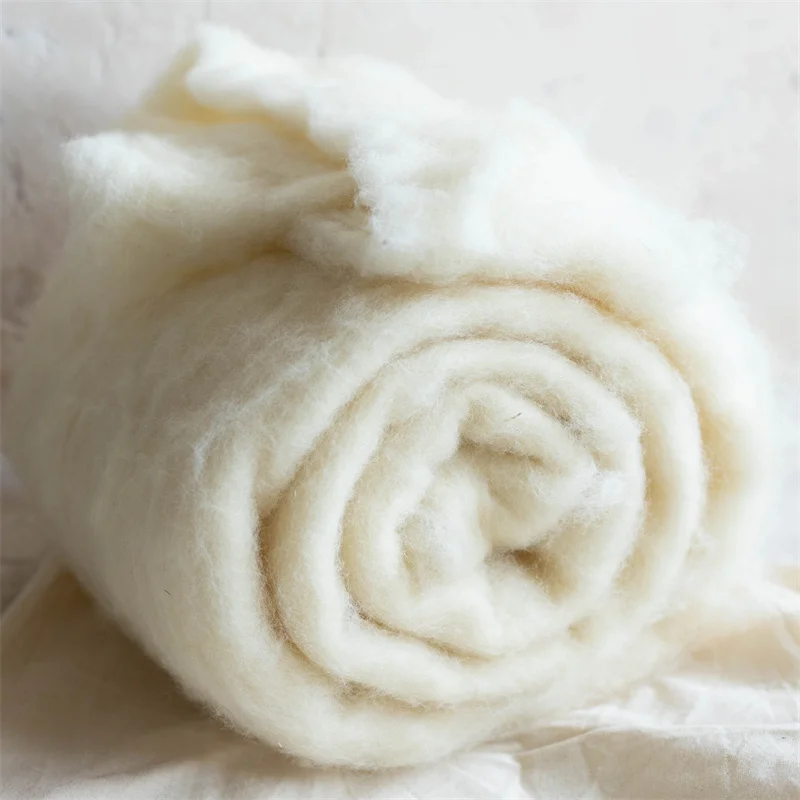
100% Wool Quilt Batting
- Characteristics: Pure wool batting provides the maximum loft, insulation, and resilience among all batting types. It retains its shape well, providing quilts with a soft, luxurious feel and excellent structure. Wool’s elasticity makes it less likely to clump or shift, even with frequent use.
- Use Cases: This type of batting is favored for high-quality bed quilts, especially in colder climates where added warmth is required. 100% wool quilt batting is commonly used in winter blankets, premium bedspreads, and quilts designed for daily use due to its durability and comfort.
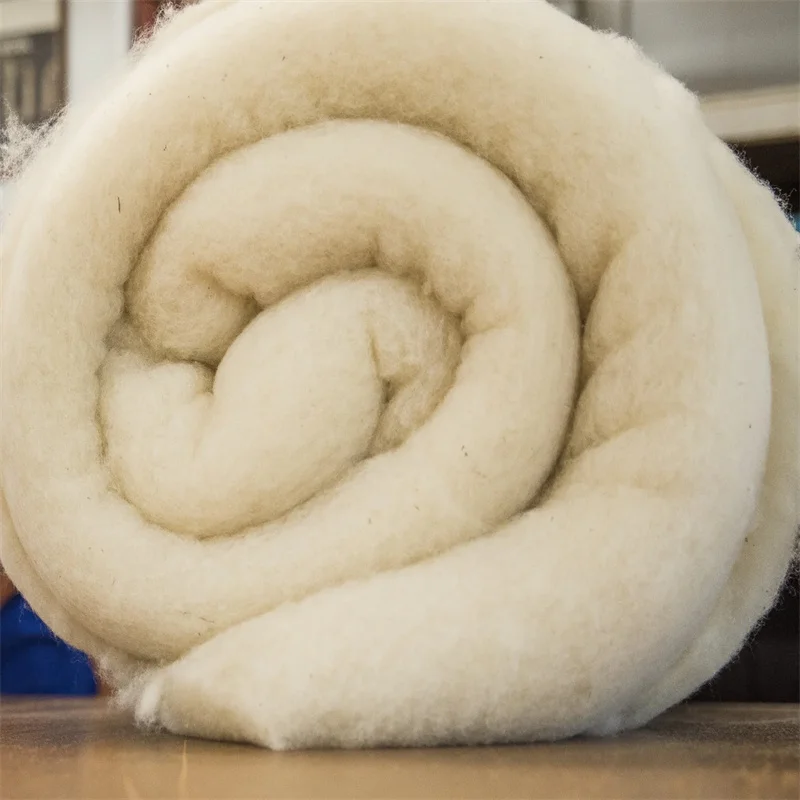
Cotton-Wool Blend Quilt Batting
e.g., Hobbs Cotton Wool Blend Batting
- Characteristics: The cotton-wool blend combines the smoothness and breathability of cotton with the warmth and resilience of wool. This balanced blend creates a batting that offers a flatter, more even surface while retaining the cozy warmth wool provides.
- Use Cases: Cotton-wool blend batting is an excellent choice for year-round quilts, especially in regions with mild winters. It’s often used in lightweight bed quilts, throw blankets, and decorative quilts that need a low-maintenance but comfortable filling. The blend also holds up well for machine quilting.
By Color and Specialty
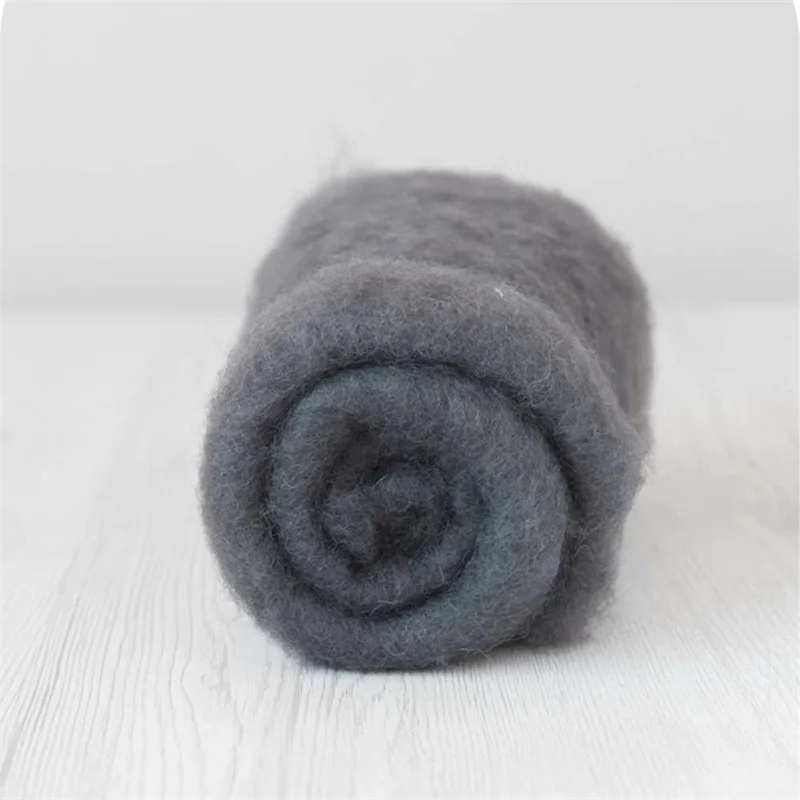
Black Wool Quilt Batting
- Characteristics: Black wool quilt batting is specifically designed for quilts with darker fabrics or themes. It adds depth and dimension to dark or bold color schemes and helps prevent the batting from showing through lighter fabrics.
- Use Cases: Black wool quilt batting is a popular choice among quilters who work with modern, artistic, or visually striking projects. It’s frequently used in wall hangings, art quilts, and dark-toned bed quilts, allowing the quilt’s colors to stand out while ensuring no batting shows through.
By Size
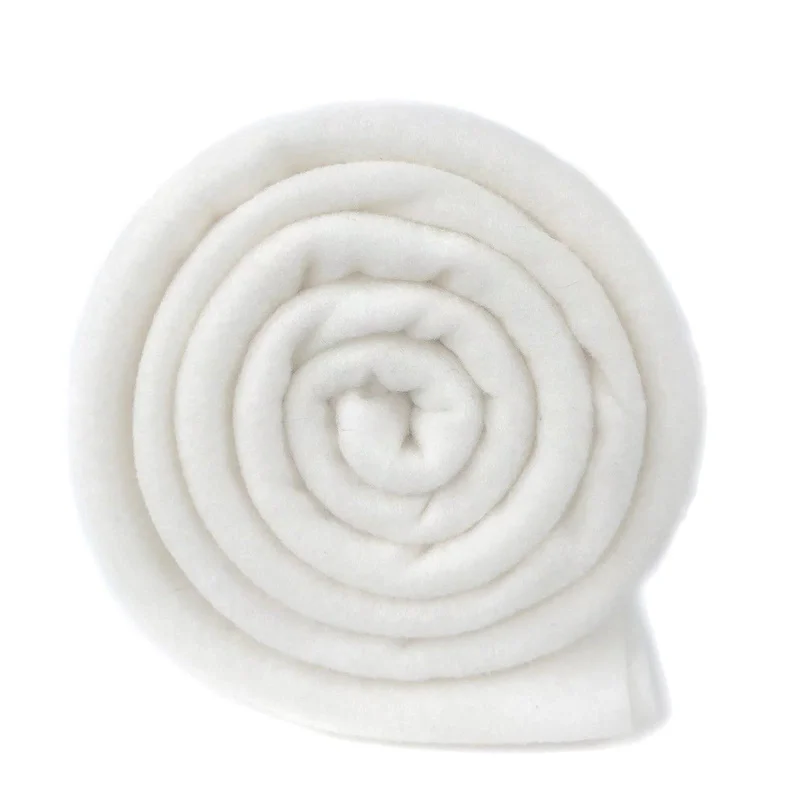
King Size Wool Quilt Batting
- Characteristics: King-size wool batting is designed to provide full coverage for large bed quilts, ensuring warmth and comfort throughout the night. The larger size offers flexibility for custom projects that require extensive surface area without piecing together smaller batting sections.
- Use Cases: King-size wool quilt batting is perfect for oversized quilts, including bedspreads, coverlets, and throws meant for king-sized beds. Quilters creating large blankets for families or guest rooms often choose king-size wool batting to ensure ample coverage and warmth.
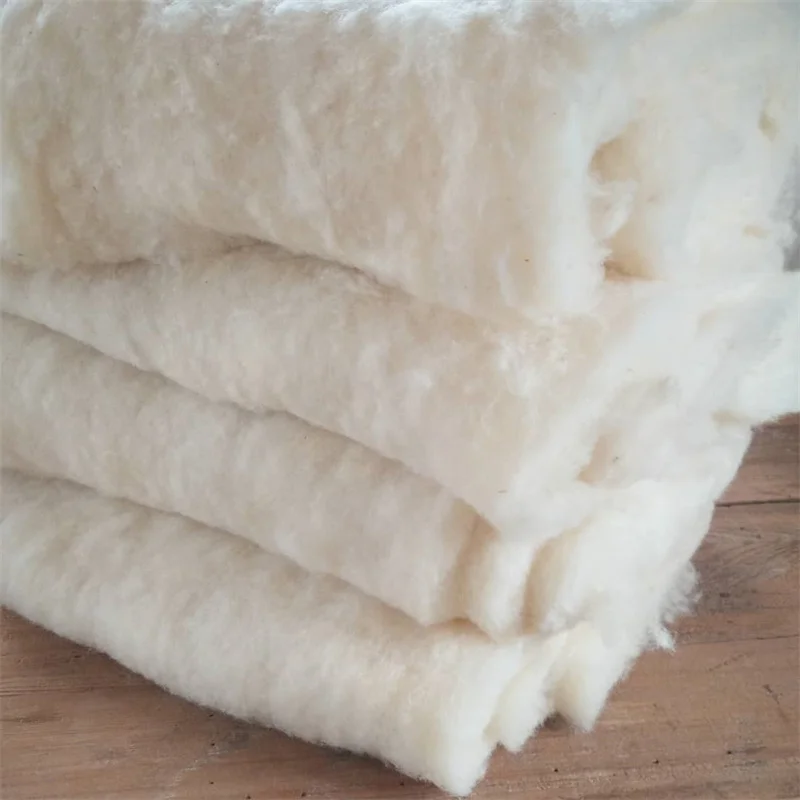
Queen Size Wool Quilt Batting
- Characteristics: Queen-size wool batting provides a cozy, full-coverage filling option suitable for queen-sized quilts. Like the king size, it’s cut to fit larger projects, making it easier to achieve consistent loft and warmth without having to piece together smaller batting sections.
- Use Cases: Ideal for quilts meant for queen-sized beds, this batting size is frequently used for bed quilts, throw blankets, and layered quilts that benefit from wool’s warmth and resilience. It’s also popular in guest rooms and everyday bedspreads due to its convenient size and versatility.
Wool Quilt Batting
Is wool batting good for quilts?
Yes! Wool batting offers excellent insulation, resilience, and a high loft, making it ideal for quilts in colder climates. It provides a soft, cozy feel, while its breathability ensures comfort year-round, even in warmer weather.
Can I wash a quilt with wool batting?
Yes, but gently. Hand wash or use a delicate machine cycle with cold water. Avoid wringing or twisting; instead, press excess water with a towel and lay flat to air dry. Proper care helps maintain the batting’s loft and shape.
What do Amish use for quilt batting?
The Amish often use natural materials, particularly wool and cotton quilt batting, for their durability, warmth, and comfort. Wool is especially valued for heirloom-quality quilts due to its resilience and insulating properties.
What can you use wool batting for?
Wool batting is versatile and suitable for quilts, blankets, upholstery, and padding in crafts. It’s particularly effective in bedding and winter wear due to its warmth, softness, and moisture-wicking qualities.
How do I wash a quilt with wool batting?
Gently hand wash or use a delicate machine cycle in cold water. Do not wring; instead, press out moisture with a towel and lay flat to dry. This helps retain the batting’s loft and softness.
Why choose wool quilt batting over cotton quilt batting?
Please feel free to contact us now if you are interested in our quilting fabrics~




